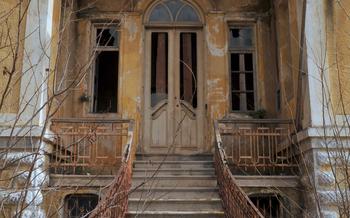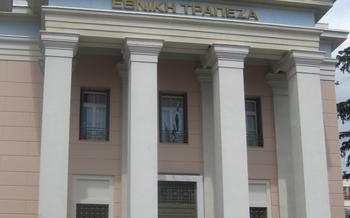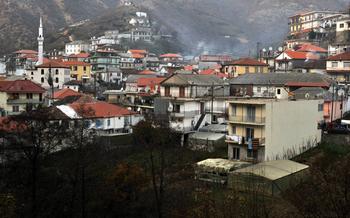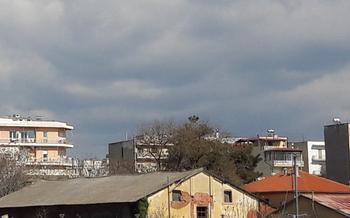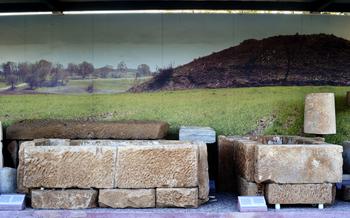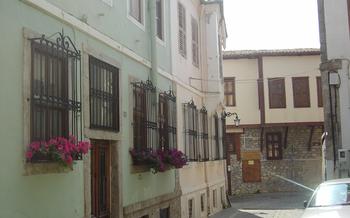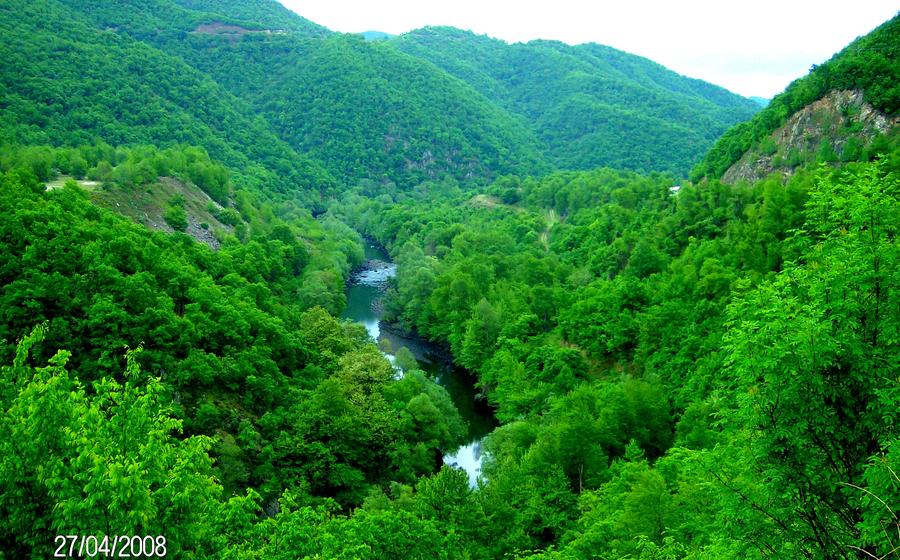
The Fossilized Forest of Kerassia
- History of the Fossilized Forest of Kerassia
- Location and Accessibility
- Guided Tours and Educational Programs
- Exploring the Forest Trails
- Petrified Tree Specimens
- Paleontological Excavations
- Geological Formations
- Flora and Fauna
- Visitor Center and Museum
- Accessibility for Differently-abled Visitors
- Photography Opportunities
- Souvenirs and Local Products
- Nearby Attractions and Activities
- Insider Tip: Unraveling the Secrets of the Petrified Forest
History of the Fossilized Forest of Kerassia
The Fossilized Forest of Kerassia is a unique natural heritage site located in the Eastern Macedonia and Thrace region of Greece. It is a remarkable testament to the Earth's ancient history, showcasing the remains of a petrified forest that existed millions of years ago. The forest's formation can be attributed to a series of extraordinary geological events that occurred during the Miocene epoch, approximately 20 million years ago. During this period, the region experienced intense volcanic activity, resulting in the deposition of a thick layer of volcanic ash and debris. This ashfall buried the surrounding forests, creating the ideal conditions for fossilization. Over time, the organic matter in the trees was gradually replaced by minerals, such as silica and calcite, resulting in the formation of the petrified wood that we see today.
The discovery of the Fossilized Forest of Kerassia in the early 20th century was a significant event in the field of paleobotany. The well-preserved fossils provided valuable insights into the ancient flora of the region and allowed scientists to piece together the evolutionary history of various plant species. The forest's unique features and exceptional preservation have made it a renowned scientific and educational resource, attracting researchers and visitors from around the world.
Location and Accessibility
The Fossilized Forest of Kerassia is situated in the village of Kerassia, approximately 15 kilometers northwest of the city of Xanthi in northeastern Greece. To reach the forest, visitors can take the picturesque route from Xanthi along the provincial road leading to the village of Kerassia. The journey offers stunning views of the surrounding countryside, with rolling hills and lush greenery.
Upon arrival in Kerassia, visitors will find clear signage directing them to the forest entrance. The forest is easily accessible by car, with ample parking space available. Those without their own transportation can opt for a guided tour, which typically includes round-trip transportation from Xanthi or other nearby towns.
The ideal time to visit the Fossilized Forest of Kerassia is during the spring or autumn when the weather is pleasant and the forest is adorned with vibrant colors. The summer months can be hot and dry, while the winter months may experience snow and icy conditions, making the trails difficult to navigate.
It is important to note that the forest is a protected natural heritage site, and visitors are required to respect the environment and follow the established rules and regulations. Permits or entrance fees may be required, and it is advisable to check with the local authorities or tourist information centers for the latest regulations and restrictions.
Guided Tours and Educational Programs
Exploring the Fossilized Forest of Kerassia is an enriching experience, and guided tours offer an opportunity to delve deeper into its history, geology, and paleontology. Knowledgeable guides provide insights into the unique characteristics of the forest, the different types of petrified trees, and the ongoing paleontological excavations. These tours cater to various interests and fitness levels, with options ranging from leisurely group tours to more in-depth private tours.
For those who prefer a self-guided experience, detailed maps and guidebooks are available at the visitor center. These resources allow visitors to explore the forest at their own pace, stopping at points of interest that capture their attention. Additionally, the forest offers educational programs and workshops throughout the year, providing a platform for learning about the forest's significance and the fascinating world of paleobotany.
Exploring the Forest Trails
The Fossilized Forest of Kerassia offers a network of well-maintained trails that allow visitors to explore the forest's diverse landscapes and petrified tree specimens. The trails vary in length and difficulty, catering to different fitness levels and interests.
The most popular trail is the Main Trail, which is a 5-kilometer loop that takes visitors through the heart of the forest. Along the trail, you'll encounter some of the most impressive petrified trees, including the Giant Sequoia, which is over 10 meters tall. The trail is relatively easy to navigate, making it suitable for families with young children.
For a more challenging hike, consider the Hilltop Trail. This 3-kilometer trail leads to the highest point in the forest, offering panoramic views of the surrounding landscape. The trail is steeper and requires a good level of fitness, but the rewards are worth the effort.
If you're short on time or prefer a more leisurely stroll, the Nature Trail is a great option. This 0.5-kilometer trail is mostly flat and accessible for visitors of all abilities. It takes you through a section of the forest where you can observe the diverse flora and fauna.
Whichever trail you choose, be sure to wear comfortable shoes and bring plenty of water, especially during the summer months. Also, remember to follow the designated trails and stay on the marked paths to avoid damaging the forest's fragile ecosystem.
Petrified Tree Specimens
The petrified forest of Kerassia is home to a diverse array of petrified tree specimens, each with its unique characteristics. These trees offer a glimpse into the ancient ecosystems that thrived in this region millions of years ago.
One of the most impressive specimens is the "Giant Sequoia", a colossal tree that stands over 10 meters tall. Its massive trunk and intricate root system are a testament to the size and grandeur of the ancient forests.
Another notable specimen is the "Twisted Tree", which, as its name suggests, features a twisted and contorted trunk. This unique shape is the result of the tree's adaptation to the harsh conditions of the prehistoric environment.
Visitors can also observe "Fallen Trees" that have been preserved in their natural state. These trees provide valuable insights into the processes of fossilization and the forces that shaped the landscape over time.
The petrified trees in Kerassia are not only aesthetically captivating but also hold immense scientific value. They serve as a record of ancient plant life and provide clues about the geological and climatic conditions of the past.
One fascinating fact about these petrified trees is that they have retained their cellular structure, allowing scientists to study the microscopic details of ancient plant tissues. This has enabled researchers to gain a deeper understanding of the evolution of plant life on Earth.
Paleontological Excavations
The Fossilized Forest of Kerassia is not only a natural wonder but also a treasure trove for paleontologists. Ongoing excavations conducted by teams of experts have uncovered a wealth of fossils, shedding light on the ancient ecosystems that thrived in this region millions of years ago.
Paleontologists meticulously uncover and study the fossilized remains of plants and animals, using specialized tools and techniques. They carefully extract these fossils from the surrounding rock, ensuring their preservation for further analysis. Each fossil unearthed provides valuable insights into the biodiversity and evolutionary history of this unique forest.
Some of the most significant discoveries made during these excavations include new species of plants and animals previously unknown to science. These findings contribute to our understanding of the interconnectedness of life forms and the dynamic changes that have shaped the Earth's ecosystems over time.
The ongoing paleontological excavations at the Fossilized Forest of Kerassia play a crucial role in expanding our knowledge of ancient life and the geological history of our planet. These excavations provide a tangible link to the past, allowing us to piece together the story of this remarkable forest and its inhabitants.
Geological Formations
The Fossilized Forest of Kerassia is renowned not only for its petrified trees but also for its unique geological formations. The forest is situated within a sedimentary basin that was formed millions of years ago, resulting in the deposition of various layers of sediment. These sediments have been subjected to different geological processes, such as erosion, weathering, and tectonic activity, which have shaped the landscape and created diverse geological features.
Visitors to the forest can observe a range of rock formations, including sandstone, limestone, and conglomerate. The sandstone, formed from the accumulation and cementation of sand grains, exhibits distinct layering and often displays beautiful patterns and colors. Limestone, composed primarily of calcium carbonate, is another common rock found in the forest. It is often found in massive beds and can contain fossils of marine organisms, providing insights into the ancient environment of the area.
Conglomerate, a sedimentary rock composed of rounded pebbles or cobbles cemented together, is also present in the forest. These pebbles and cobbles were transported and deposited by ancient rivers or streams, forming thick layers of conglomerate. The different rock types and their arrangement provide valuable information about the geological history of the region and the processes that have shaped the landscape over time.
Flora and Fauna
The Fossilized Forest of Kerassia is not only a botanical wonder but also a haven for a diverse array of wildlife. The unique microclimate and rich fossil deposits have created a thriving ecosystem that supports a variety of plant and animal species.
Among the flora, visitors can spot a variety of wildflowers, shrubs, and trees that have adapted to the harsh conditions of the forest. These include drought-tolerant plants such as cactuses and succulents, as well as hardier species like oaks and pines. The forest also provides a habitat for rare and endangered plant species, making it a valuable conservation area.
The fauna of the forest is equally diverse, with a variety of bird species, reptiles, and mammals calling it home. Visitors may catch a glimpse of soaring eagles, colorful lizards, and shy deer roaming freely among the petrified trees. The forest also provides a breeding ground for migratory birds, making it a popular destination for birdwatching enthusiasts.
One of the most fascinating aspects of the forest's fauna is the presence of fossilized animal remains. These include fossilized footprints, bones, and even complete skeletons, offering valuable insights into the ancient ecosystem that existed millions of years ago.
To ensure a harmonious coexistence between wildlife and visitors, it is important to practice responsible wildlife observation. This includes maintaining a respectful distance from animals, avoiding loud noises, and not disturbing their natural behavior. By following these guidelines, visitors can help preserve the delicate balance of the forest's ecosystem while enjoying the wonders of its flora and fauna.
Visitor Center and Museum
The visitor center of the Petrified Forest of Kerassia serves as a gateway to the wonders of this natural heritage site. It provides a range of facilities and resources to enhance the visitor experience. Upon entering, you'll find restrooms, a gift shop, and a cafe where you can grab a bite to eat or a refreshing drink.
The museum within the visitor center is a treasure trove of knowledge and exhibits dedicated to the history, geology, and paleontology of the forest. Immerse yourself in the interactive displays that bring the ancient world to life. Learn about the geological forces that shaped this unique landscape and the diverse flora and fauna that once thrived here.
The visitor center also offers educational resources such as books, brochures, and interactive exhibits, allowing you to delve deeper into the scientific and cultural significance of the forest. Take advantage of these resources to gain a comprehensive understanding of this extraordinary natural wonder.
Admission to the visitor center and museum is affordable, ensuring that everyone has the opportunity to explore and learn about the Petrified Forest of Kerassia. The friendly and knowledgeable staff are always ready to assist you with any questions or provide additional information. Whether you're a nature enthusiast, a history buff, or simply seeking a unique and educational experience, the visitor center is an essential stop on your journey through the petrified forest.
Accessibility for Differently-abled Visitors
The Fossilized Forest of Kerassia is committed to ensuring that all visitors, including those with disabilities, have a safe and enjoyable experience. The forest offers a variety of accessibility features to accommodate differently-abled visitors.
The trails in the forest are wheelchair accessible, allowing visitors to explore the petrified trees and other geological formations with ease. The visitor center is also wheelchair accessible, and features accessible restrooms, a gift shop, and a cafe.
For visitors with visual impairments, the forest offers audio guides that provide detailed descriptions of the petrified trees and other points of interest. Braille signage is also available throughout the forest.
For visitors with hearing impairments, the forest offers sign language interpreters upon request. Advance notice is required to ensure the availability of an interpreter.
The Fossilized Forest of Kerassia is committed to providing a safe and enjoyable experience for all visitors, regardless of their ability. If you have any questions or concerns about accessibility, please contact the forest staff in advance of your visit.
Photography Opportunities
The Fossilized Forest of Kerassia presents a photographer's paradise, offering a diverse range of captivating subjects. The petrified trees, with their intricate textures and vibrant colors, are a sight to behold. Capture the grandeur of these ancient giants against the backdrop of the surrounding landscape. The play of light and shadow creates dramatic effects, especially during sunrise and sunset.
To capture the best shots, consider using a wide-angle lens to encompass the vastness of the forest. Experiment with different shutter speeds to convey a sense of movement or stillness. For close-up shots of the petrified trees, a macro lens will reveal the intricate details and patterns.
Remember to be respectful of the environment and avoid disturbing the natural surroundings. Follow any photography guidelines or restrictions that may be in place to protect the forest. By capturing the beauty of this unique landscape, you can share its wonders with others and raise awareness about its significance.
Souvenirs and Local Products
At the visitor center and in local gift shops, you can find a variety of souvenirs and local products related to the forest. These include petrified wood specimens, fossils, and replicas of the ancient plants and animals that once inhabited the area. You can also find books, postcards, and other educational materials about the forest's history, geology, and paleontology.
When shopping for souvenirs, be sure to support local businesses and artisans. This helps to ensure that the benefits of tourism are shared throughout the community and that traditional crafts and skills are preserved. Look for unique or specialty items that are not mass-produced and that reflect the region's cultural heritage.
Some popular souvenirs include:
- Petrified wood jewelry, such as necklaces, bracelets, and earrings
- Fossils of plants and animals, such as leaves, shells, and bones
- Replicas of ancient artifacts, such as pottery, tools, and weapons
- Books and postcards about the forest's history, geology, and paleontology
- Local honey, olive oil, and wine
- Handmade crafts, such as pottery, textiles, and woodwork
By purchasing souvenirs and local products, you can help to support the local economy and take home a piece of the forest's unique history and culture.
Nearby Attractions and Activities
-
Thracian Folklore Museum: This museum showcases the rich cultural heritage of the Thracian people, featuring traditional costumes, musical instruments, and artifacts.
-
Aliki Beach: Located just a short drive from the forest, this picturesque beach offers stunning views of the Aegean Sea and is a popular spot for swimming, sunbathing, and water sports.
-
Enchanted Forest of Dadia: Explore this unique nature reserve, home to a diverse array of flora and fauna, including rare birds of prey. Visitors can embark on guided tours or hiking trails through the forest.
-
Nestos River Delta: A beautiful natural area formed by the Nestos River as it meets the Aegean Sea. Visitors can enjoy birdwatching, kayaking, and guided boat tours to explore the diverse ecosystems of the delta.
-
Mount Falakro: For those seeking adventure, Mount Falakro offers challenging hiking trails, breathtaking views, and opportunities for skiing during the winter months.
-
Traditional Villages: Discover the charm of traditional Thracian villages nestled in the surrounding countryside. Visitors can experience authentic local culture, sample traditional cuisine, and purchase handmade crafts.
-
Wine Tasting: The region is known for its viticulture, and visitors can participate in wine tasting tours at local wineries, savoring the flavors of local grape varieties.
Insider Tip: Unraveling the Secrets of the Petrified Forest
Venture beyond the main trails and discover the hidden wonders of the petrified forest. Seek out the secluded "Secret Grove," where ancient trees stand tall, untouched by time. This tranquil oasis offers a serene escape from the crowds, allowing you to connect with nature's silent whispers. As you wander through the grove, let your imagination soar, picturing the forest as it once was, teeming with life and vibrant hues. Embrace the solitude and find solace in the embrace of these petrified giants. Remember, the most profound experiences often lie just off the beaten path, waiting to be unearthed by those willing to explore.

